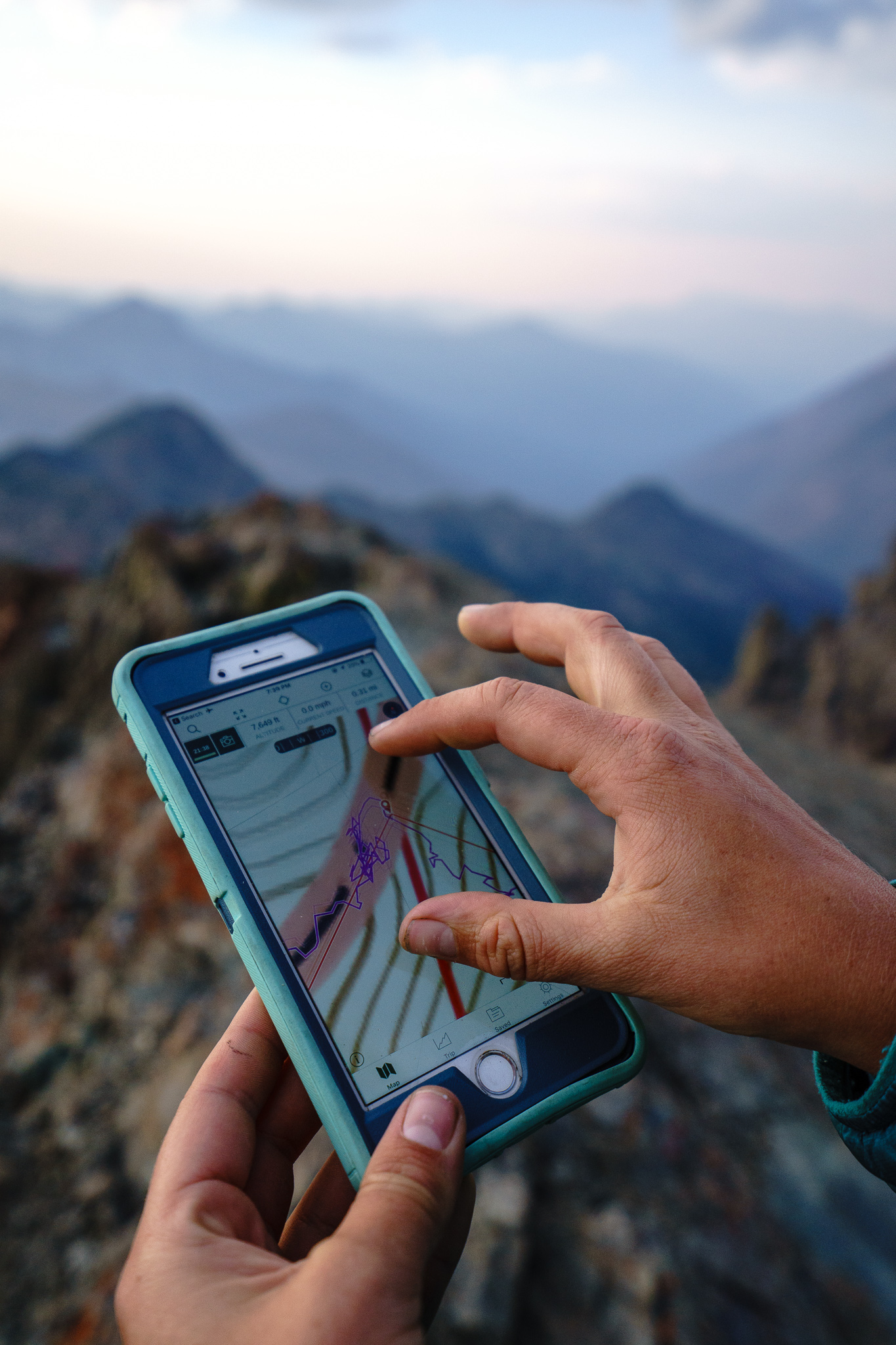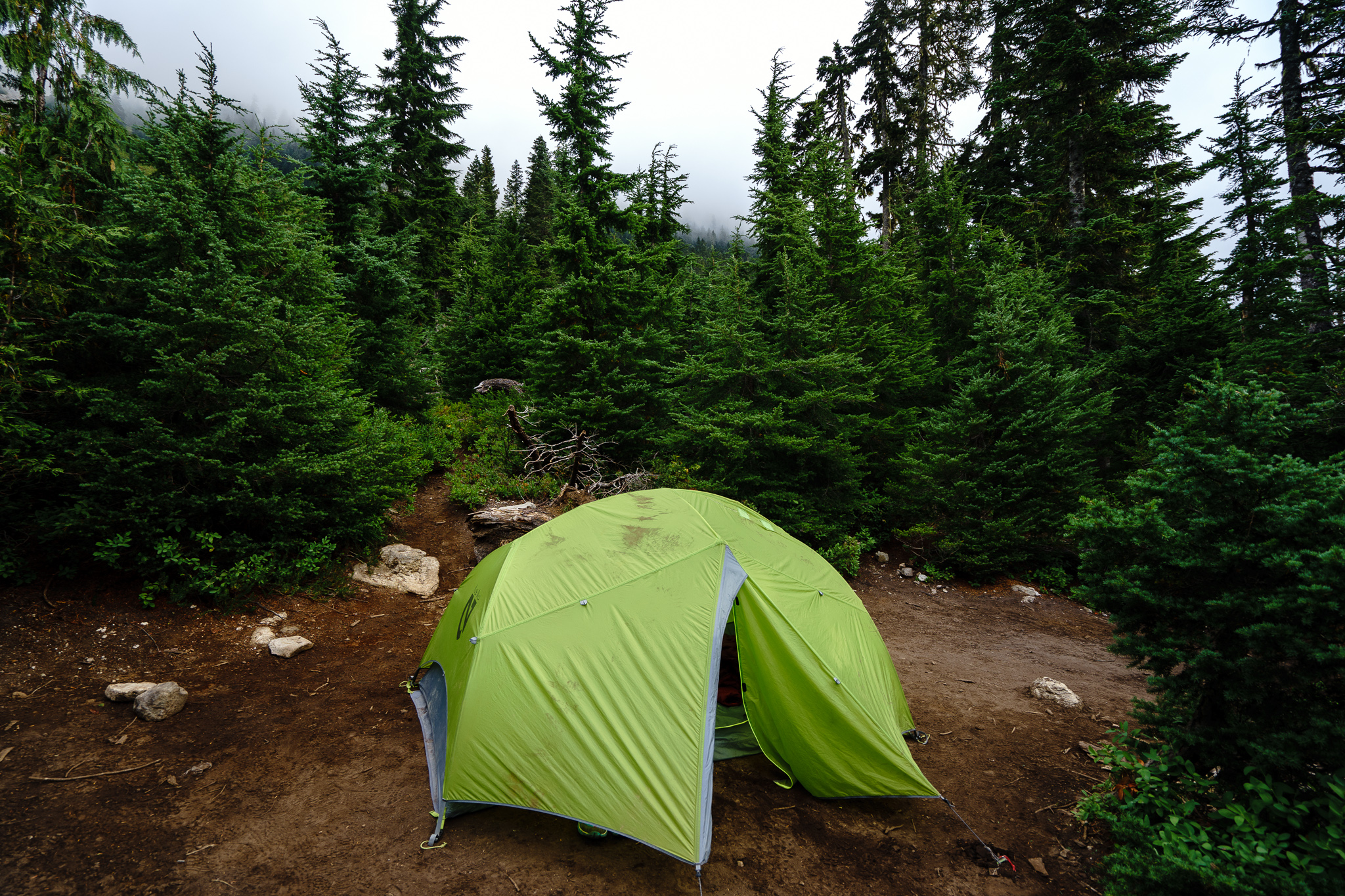Even for the shortest hikes, the 10 Essentials should always be with you in the backcountry. These items help insure you are prepared for an emergency should one come your way. You should have all of these items while hiking and most importantly, know how to use them.
What Are They?
Navigation: map, compass, altimeter, GPS device, personal locator beacon (PLB) or satellite messenger
Headlamp: plus extra batteries
Sun protection: sunglasses, sun-protective clothes and sunscreen
First aid: including foot care and insect repellent (as needed)
Knife: plus a gear repair kit
Fire: matches, lighter, tinder and/or stove
Shelter: carried at all times (can be a light emergency bivvy)
Extra food: Beyond the minimum expectation
Extra water: Beyond the minimum expectation
Extra clothes: Beyond the minimum expectation
Let’s break these down one by one and talk about what they really are and what I use to be prepared.
Navigation
I personally always navigate using Gaia, an app for your phone. I download the map of the area I am going to ahead of time on there and often map out my route ahead of time as well. I always carry a back up battery for my phone in case my phone dies. Others in my group will often have the route downloaded as well. I took a map and compass class last year and learned the skills to navigate based on those tools as well. I am glad I learned the skills, but using my phone is much more efficient and a time saver. I also recently bought a personal locator beacon. I bought the Garmin InReach Mini and have loved it so far. It brings great peace of mind to have an SOS button on you and to be able to communicate and update those back home.
Using the Gaia app to navigate
Garmin InReach Mini connects with an app on your phone to text those back home. SOS button on the side of the device.
Headlamp
I use a standard Black Diamond headlamp. Even on day hikes where I don’t expect to be in the dark at all, I bring it. You never know when you will need it. I always carry extra batteries as well.
Black Diamond Spot Headlamp
Sun Protection
We automatically think of sunglasses with sun protection. I always bring them, even on the most cloudy, socked in days. I even bring an extra cheap pair if I’m doing snow travel and having sunglasses is essential. Snow blindness is a real thing and not fun! For regular hikes, I will use my Sunski polarized sunglasses. For extensive snow or glacier travel I will use my Julbo Glacier glasses.
Sunscreen is probably the next thing you may think of with sun protection. I always carry a mini refillable bottle of sunscreen and try to be good about putting it on many times during a hike. Even on the overcast days you have to remember to use it.
Lastly, you may not think of sun-protective clothing, but it is something else to keep in mind. This could be a hat to protect your head on a bright sunny day or a buff to cover your neck and ears from sun reflecting on snow. I recently just bought a Patagonia sun shirt to use for super sunny days on snow. It is a thin material with SPF in it.
Sunski Sunglasses
First Aid
I took a wilderness first aid course last year that really helped me hone in on my kit. They focused not as much on what’s in it, but if you know how to use everything in it and utilizing other things as resources in a first aid emergency. I highly recommend taking a wilderness first aid course if you spend much (or any) time outside. Some things in my first aid bag include bandages, gauze, medical wrap, medical gloves, different medications and more.
Did you know that trekking poles can double to help build a splint for a broken bone? I learned this helpful tip in my first aid course and so much more.
Knife + Gear Repair
I carry a simple, small multi-tool in my pocket. I also carry gear mending tape, duct tape and zip ties.
If a tent pole broke we could duct tape it. Haven’t had to do that yet, but being prepared is important!
Fire
If you were to get stranded for a night unprepared in the woods, a fire may save your life. I always carry waterproof matches and a lighter. If I am staying the night somewhere I will have a mini stove as well to cook food.
It’s not often we can have a fire backpacking due to the rules and regulations around where you can have a fire. The purpose of having the tools to start one in your 10 essentials kit is to be able to start a fire if you have an unplanned night outside and the heat is needed to save your life.
Shelter
Notice above that it says carried at all times? When you are backpacking, you will likely have a tent and not think twice about it. What about day hikes? A simple, cheap emergency blanket will not cut it if you have to spend the night. In the last year I got this warmer thermal bivvy sack on Amazon. It would not be a comfortable night sleeping in it, but I would likely survive. I know others like to carry a tarp even on day hikes to be able to build shelter if need be.
I carry this SOL Thermal Bivvy on all day hikes
Extra Food
If you’ve ever hiked with me, you know I like to bring a lot of food. This isn’t only to be able to have a lot of options (which I like), but in an emergency situation I would have enough food to last me likely another day. You can always keep a Gu energy packet in your kit as an emergency backup as well.
Maybe don’t be this ridiculous with your day hiking food, but a birthday summit called for it. If we got stuck out there I think we could survive a long time on these carbs.
Extra Water
It can be hard to know exactly how much water you will need on a hike and where water sources will be. This is something I try to research depending on where I am camping and hiking. The key is bringing a water filter to be able to access additional water beyond what you have with you. I once made the mistake of thinking 2 liters of water was enough on a hot summer day on a hard hike. I ran out before I was half way through the hike and none of us had a filter. We had to drink pure glacier run off water. So thankful I didn’t get sick from that learning lesson. I have also borrowed out my water filter to many other day hikers who have made this same mistake. I use the Sawyer Gravity for backpacking and the MSR Trailshot for day hikes.
MSR TrailShot- perfect for day hikes
I love this filer for filtering 1 gallon of water at a time! Perfect for when a couple people are sharing this.
Extra Clothes
I once heard bring one warmer layer that you think you wont need for the day as a back up layer in case of an emergency. I have since tried to implement this on every hike I do. I also always bring a rain jacket no matter the forecast. With living in the PNW, weather can be unpredictable.
In the winter I take all of this a step further and make sure I have a back up layer for many things. If your socks get wet it will be a life saver to have a dry pair in your bag!
Puffies even in the summer in the PNW are an essential!
How do I not forget any of these? Most of these items I put in one bag to keep them all together so that when I change out backpacks, I will still have all the items I need.
Be prepared on the trail, be safe and know how to use your gear.
Happy hiking!













